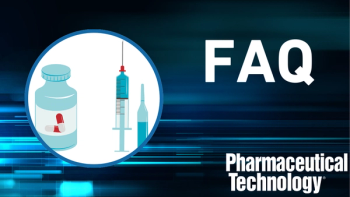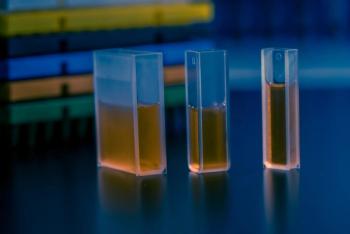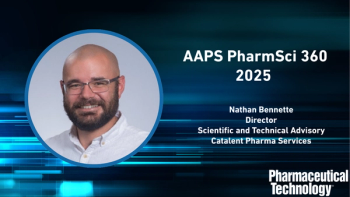
- Pharmaceutical Technology's In the Lab eNewsletter, July 2022
- Volume 17
- Issue 7
Developing Methods for Analyzing Biosimilars
Biosimilar data analysis must demonstrate a correlation between structure and function.
With many blockbuster biologic drugs soon to lose patent protection—Humira and Keytruda, among others—the number of biosimilars under development is increasing. In jurisdictions with robust regulatory standards, such as the United States and European Union, the approval pathways for biosimilars, while distinct from the pathway for originator biologics, are rigorous and scientifically appropriate, according to Jeff Yant, executive director of biosimilars operations at Amgen.
These approval pathways require demonstration of biosimilarity between the biosimilar candidate and the approved innovator drug in terms of efficacy, safety, and purity. To meet this requirement, biosimilar developers must evaluate the physiochemical and structural properties of the biosimilar candidates and reference products and conduct clinical studies to compare the safety and efficacy profiles of the products.
No clinically meaningful differences
Biosimilars must have the same route of administration, the same dosage, and the same side effects profile as the innovator drug, notes Todd Stawicki, global marketing manager for biopharma at SCIEX. Therefore, to develop a biosimilar, it is necessary to fully characterize the reference product so the biosimilar can be built to be highly similar in all of these respects, including the different variants and impurities that are present, adds Susan Darling, senior director of product and market management for CE and Biopharma at SCIEX.
Biosimilarity is first demonstrated with analytical data supporting structural and functional similarity, then through clinical studies assessing immunogenicity and pharmacokinetics (PK), and in some cases pharmacodynamics (PD). Additional comparative clinical studies, says Ricardo Infante, global medical lead for Organon Biosimilars, are conducted between the reference product and the proposed biosimilar to ensure there are no clinically meaningful differences in efficacy and safety.
“The goal of a biosimilar development program is to demonstrate that the candidate biosimilar is highly similar to and has no clinically meaningful differences from its originator/reference product, not to independently establish de novo the safety and efficacy of the biosimilar,” adds Yant.
The array of data the manufacturer of a proposed biosimilar product must generate for the proposed product and the FDA-approved reference product in order to demonstrate biosimilarity include, according to Yant, analytical studies demonstrating that the biological product is highly similar to the reference product, notwithstanding minor differences in clinically inactive components; animal studies, including an assessment of toxicity; and a clinical study or studies sufficient to demonstrate safety, purity, and potency of the proposed biosimilar product in one or more of the indications for which the reference product is licensed.
Yant also emphasizes that no single study or endpoint should be considered “pivotal” in a biosimilar marketing application. Rather the totality of data and information submitted should support the demonstration of biosimilarity (1).
The molecule is the process
Developing a biosimilar is more nuanced than developing a small-molecule generic product. With small molecules, the API is a single molecule with a highly defined structure and chemical composition. There may be different synthetic routes to producing the compound that could potentially lead to different impurities, but the actual molecule itself will be identical in the branded and generic versions. There are no possible variants to consider.
Like all biologics, Yant notes that biosimilars are produced through an intricate, multistep process using living cells. The molecule is in fact determined by the process, Stawicki stresses. Every step in the process and every change in process conditions affects the nature of the biologic product. “There is a significant change in mentality needed when developing biosimilars vs. generics,” he says, “with the focus shifting to defining and controlling and characterizing the process to make the highly similar product.” There is also a need, Stawicki notes, for biosimilar developers to have a good understanding of how potential changes to the molecule can change side effects.
Complicating this issue is the fact that for most biologics, the majority of details about the production processes for these reference products are not publicly available. “The cell line and manufacturing process of the reference product are proprietary and belong only to the reference product
manufacturer,” says Yant.
As a result, biosimilar developers basically need to start from scratch and use their own processes. “Characterizing the reference molecule, figuring out which cell line to use, and essentially reengineering the manufacturing process is tremendously expensive. For this reason, some of the companies with the most demonstrated success in biosimilars are also developers of novel drugs—they are able to leverage the same expertise, processes, and toolset for both,” Darling observes.
Essential to link structure to function
While the same analytics are used in biosimilar development that are used for general protein-based new-product development, it is even more important to link structure to function, Darling remarks. “It is unlikely that a biosimilar production process will yield the same variants in the same percentages as the process developed for the innovator drug, and it is therefore necessary to be able to demonstrate that the differences in variants and variant percentages don’t impact the function of the molecule,” she explains.
Analytics, adds Infante, are the foundation of biosimilar development. “Analytical testing occurs during initial development to characterize the structure and function because analytical data [are] more sensitive than clinical data in detecting differences between a biosimilar and its reference product should they exist,” he says.
Procurement and analysis of multiple batches of the reference product help to establish a baseline that informs subsequent structural and functional similarity tests. “To ensure high confidence in structural and functional similarity between a proposed biosimilar product and its reference product, comprehensive analytical comparison covering a broad disciplinary of analytical techniques should be considered,” Yant states. He adds that analytical similarity assessment should be performed using scientifically sound, fit-for-purpose, state-of-the-art techniques that are sensitive and capable of detecting small differences.
Peptide mapping is particularly important for understanding sequence variations and differences in post-translational modifications, but standard techniques such as capillary electrophoresis, mass spectrometry, liquid chromatography, and binding assays are all crucial, Darling observes.
All of the analytics used to characterize the innovator drug also guide process development both upstream and downstream, according to Stawicki. “There are multiple steps in upstream process development and even more in downstream development, and every single one requires multiple types of analyses. The better the analytical capability—the more sensitive and more informative—the better the process, and optimum processes are needed for every step that can have an impact on quality, efficacy, and yield. It is not possible to design and execute such complicated biosimilar processes without fully characterizing every step,” he insists.
Yant adds that new analytical technologies may help address uncertainties about biosimilarity between the proposed biosimilar and the originator product, but any potential limitations also must be understood.
Managing technology advances
Advances in analytical technologies can actually create some challenges. Older biologics that have been on the market for some time may have been developed using technologies that are no longer accepted by the regulatory authorities. One example highlighted by Darling is sodium dodecyl sulfate–polyacrylamide gel electrophoresis (SDS-PAGE). State-of-the-art techniques must be used today to meet regulatory expectations, which requires the development and validation of new methods. Newer modalities such as bispecifics and fusion proteins can also present challenges to biosimilar development with respect to analytical method development.
“The difficulties associated with biosimilar analysis really are dependent on the molecule that is involved. Ion exchange chromatography might work for a monoclonal antibody but not for a bispecific. It isn’t so much that the molecule being developed is a biosimilar, but more that each specific type of molecule requires the right specialized hands-on expertise,” Darling comments.
Established platform technologies invaluable
In most cases, biosimilar developers seek to use standard methods that can be identified using information found in publicly available documents filed on the reference compound or in the general literature. “Although much of the process knowledge about reference compounds is kept proprietary, information about analytical methods is often available, and wherever possible biosimilar developers prefer to leverage the same methods used for the innovator molecule because getting the same results with these methods speaks strongly to regulators,” Darling observes. “If different methods are used, then they must be justified and more work is needed to provide assurance of similarity,” she adds. Ideally, those standard methods are based on platform technologies and standard workflows.
Rising interest in statistical analysis
The use of statistical methods to aid in assessment of analytical similarity results has been a topic of debate among regulatory agencies and continues to be discussed by FDA and the European Medicines Agency (EMA). The lack of final regulatory guidance has not, however, prevented successful approval and marketing of biosimilar products in both the US and EU, according to Yant. “Finding analysis methodologies that can be broadly accepted by regulatory agencies for comparative assessment of analytical similarity will streamline biosimilar regulatory submissions and approval processes globally,” he contends.
Evolving design strategies to inhibit biosimilar development
Even with more specific regulatory guidance, the development of biosimilars may get more difficult going forward. “When new biologic drugs are developed today, innovators are thinking from the outset about reducing the ability of competitors to develop biosimilars. Innovator molecules are designed with very tightly defined characterization and structural features—for instance very specific glycans—that make it difficult for anyone to exactly reproduce them,” Stawicki explains. “The strategy today,” he adds, “is to design innovator molecules that have a smooth continuation from innovator molecule to very-difficult-to-copy biosimilar so the original developer can maintain a strong market position throughout the life of the drug.”
Maintaining quality standards
Regardless of the design strategy and the complexity of biosimilars, however, a focus on quality must be maintained. “Biologics development, whether for innovator or biosimilar products, is a complex process that requires a quality-based systematic approach. All variables and parameters critical to product quality are identified and rigorously monitored to ensure safe and effective products for patients,” Infante avers.
To create and preserve physician confidence, patient safety, and the integrity of the healthcare system, biosimilars must meet and maintain robust scientific standards before and after approval, Yant agrees. He notes, though, that there has been an increased debate around biosimilar development, with some stakeholders calling for lower regulatory standards around comparative clinical studies and demonstrating interchangeability during the development process. “Amgen firmly believes that rigorous, scientifically appropriate regulatory standards are necessary for the approval, manufacture, and uninterrupted availability of safe and effective biological products, including biosimilars,” he says.
“Analytical data alone,” Yant stresses, “are insufficient to determine biosimilarity. There will always be subtle structural and functional differences between a proposed biosimilar and an originator product. Analytical methodologies alone cannot definitively evaluate the potential impact of such differences on clinical outcomes, including pharmacokinetics, efficacy, and immunogenicity.”
Yant concludes that as biosimilar development continues to evolve, all biological products, including biosimilars, must continue to be held to the same manufacturing quality standards—following the same strict standards of quality, safety, and efficacy—expected for reference products.
Reference
FDA, Guidance for Industry. Clinical Pharmacology Data to Support a Demonstration of Biosimilarity to a Reference Product (CDER, CBER, December 2016).
About the author
Cynthia A. Challener, PhD, is contributing editor for Pharmaceutical Technology.
Articles in this issue
over 3 years ago
Lab Digitalization: From Source to Scientistover 3 years ago
Elemental Impurity Analysis Crucial to Patient Safetyover 3 years ago
Bio-Rad Launches SEQuoia Express Stranded RNA Library Prep Kitover 3 years ago
Bio-Rad Launches CFX Duet Real-Time PCR SystemNewsletter
Get the essential updates shaping the future of pharma manufacturing and compliance—subscribe today to Pharmaceutical Technology and never miss a breakthrough.




